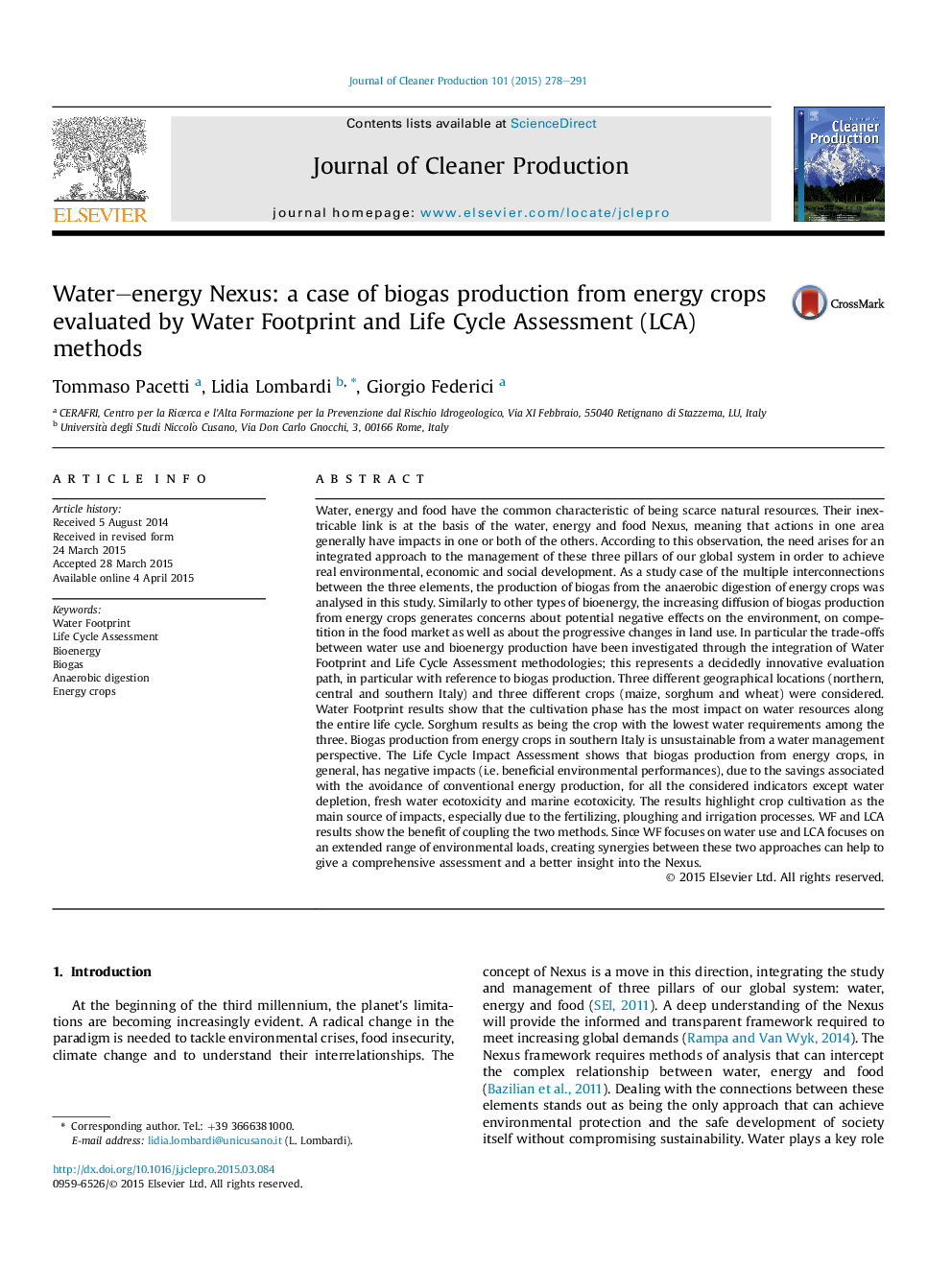| کد مقاله | کد نشریه | سال انتشار | مقاله انگلیسی | نسخه تمام متن |
|---|---|---|---|---|
| 1744599 | 1522145 | 2015 | 14 صفحه PDF | دانلود رایگان |

• Biogas production from anaerobic digestion (AD) of energy crops was studied.
• Life Cycle Assessment and Water Footprint methodologies were applied and integrated.
• Different locations, crops and treatments were considered for AD process.
• Water Footprint shows that cultivation phase is the most impacting one.
• Biogas production has beneficial effects except for water depletion and ecotoxicity.
Water, energy and food have the common characteristic of being scarce natural resources. Their inextricable link is at the basis of the water, energy and food Nexus, meaning that actions in one area generally have impacts in one or both of the others. According to this observation, the need arises for an integrated approach to the management of these three pillars of our global system in order to achieve real environmental, economic and social development. As a study case of the multiple interconnections between the three elements, the production of biogas from the anaerobic digestion of energy crops was analysed in this study. Similarly to other types of bioenergy, the increasing diffusion of biogas production from energy crops generates concerns about potential negative effects on the environment, on competition in the food market as well as about the progressive changes in land use. In particular the trade-offs between water use and bioenergy production have been investigated through the integration of Water Footprint and Life Cycle Assessment methodologies; this represents a decidedly innovative evaluation path, in particular with reference to biogas production. Three different geographical locations (northern, central and southern Italy) and three different crops (maize, sorghum and wheat) were considered. Water Footprint results show that the cultivation phase has the most impact on water resources along the entire life cycle. Sorghum results as being the crop with the lowest water requirements among the three. Biogas production from energy crops in southern Italy is unsustainable from a water management perspective. The Life Cycle Impact Assessment shows that biogas production from energy crops, in general, has negative impacts (i.e. beneficial environmental performances), due to the savings associated with the avoidance of conventional energy production, for all the considered indicators except water depletion, fresh water ecotoxicity and marine ecotoxicity. The results highlight crop cultivation as the main source of impacts, especially due to the fertilizing, ploughing and irrigation processes. WF and LCA results show the benefit of coupling the two methods. Since WF focuses on water use and LCA focuses on an extended range of environmental loads, creating synergies between these two approaches can help to give a comprehensive assessment and a better insight into the Nexus.
Journal: Journal of Cleaner Production - Volume 101, 15 August 2015, Pages 278–291